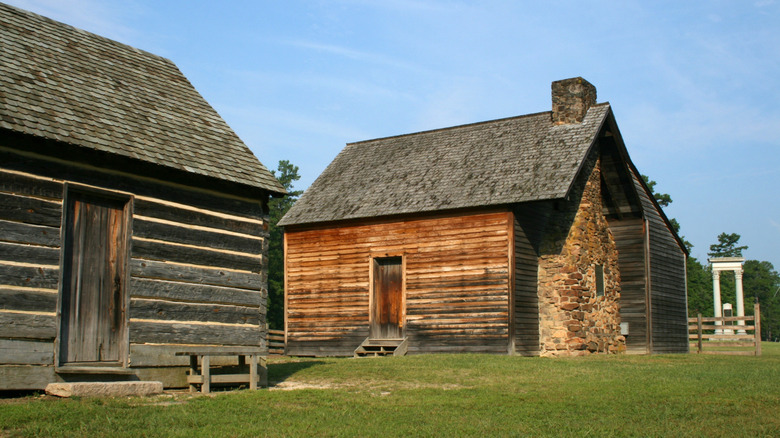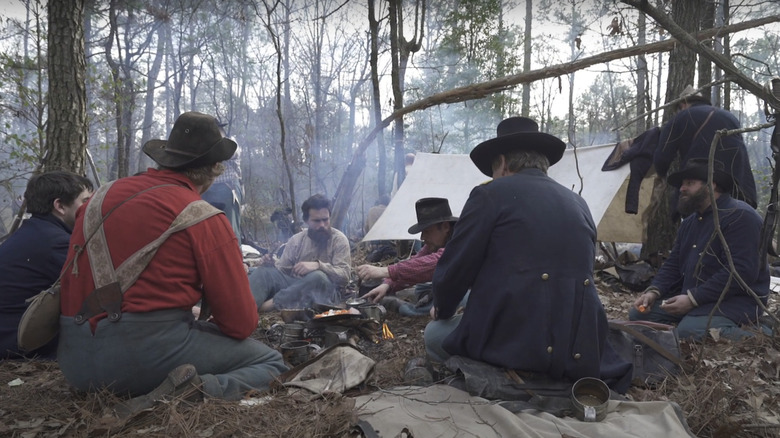The Historic Site Of Surrender In The Civil War Is A Must-Visit For American History Buffs
On April 17, 1865, the largest troop surrender of the Civil War occurred. While the event was a momentous one, the place where it happened was not particularly notable before that day. It was a farmhouse known as Bennett Place. And, indeed, it belonged to an American farming family: James and Nancy Bennett. The farm, which grew crops like corn, wheat, and potatoes, was the spot chosen for General Joseph Johnston to surrender to General William Sherman.
Today, this place is a thrilling destination for Civil War buffs, just like this National Historical Park. When you think of North Carolina, you might imagine a day trip to Asheville or its artsy mountain town alternative, Boone. But miles away, Durham, North Carolina, is well worth a visit. There, you can check out Bennett Place and stand in the very place where the two generals negotiated the terms of surrender in the parlor of a simple North Carolina farmhouse.
You may want to plan to visit around 11 a.m., 1 p.m., or 3 p.m. so that you can attend a 45-minute guided tour and learn more. While you're there, you can swing by the gift shop, explore the surrounding hiking trails, and check out the museum at the visitor center to learn more about both the Bennetts and the historical turning point that took place at their home.
Step back in time at Bennett Place
While the original Bennett House burned sometime before the 1920s, a very similar neighboring home was moved to the site. This 1800s home has been completely restored to its original state, so when you go inside, it looks just the same as the day when Generals Sherman and Johnston stepped through the door. General Lee had already surrendered at Appomattox eight days before, but the assassination of President Abraham Lincoln, just three days before the generals met at Bennett Place, made the situation complicated.
Ultimately, an agreement was hashed out. This was significant to the nation as a whole but particularly vital for the people of North Carolina. It's believed that Johnston's decision to surrender when he did shielded the state from the devastation suffered by other Southern States as Sherman made his famous march to the sea.
When you enter the house today, you can either walk through on your own or follow a tour guide to explore the rooms, still decorated in perfect periodic accuracy. When you enter the parlor, where the terms of the Confederate surrender were actually negotiated, you can learn all about the meeting between Sherman and Johnston and its place at the end of the war. When you walk into the kitchen, you can see the way meals were prepared in the 1800s and discover what life was like for those left behind by the Civil War. The Bennetts themselves had two sons who were killed in battle before the surrender.
[Image by Ildar Sagdejev (Specious) via Wikimedia Commons | Cropped and scaled | CC BY-SA 4.0]
Learn about the Civil War in new ways
Bennett Place is packed with opportunities to learn more about the Civil War. As you explore the surrounding grounds, you will find a small campsite designed to show how soldiers in this area lived before the surrender. Outside, you can visit the Unity Monument, which dates back to the early 1920s. Make sure to explore the section of the museum dedicated to the 200,000 Black Americans, many of whom had previously been enslaved, forced into labor, or fought for the Union Army, which is particularly moving.
While the days leading up to Memorial Day might be among the worst days of the year to fly, if you can make it to Bennett Place around the last Monday in May, you're in for a particularly exciting experience. During Memorial Day Weekend, costumed actors perform reenactments from the Civil War — and other military conflicts fought in the U.S. — to give you what feels almost like a first-hand experience, making the nation's history feel closer than ever before.


